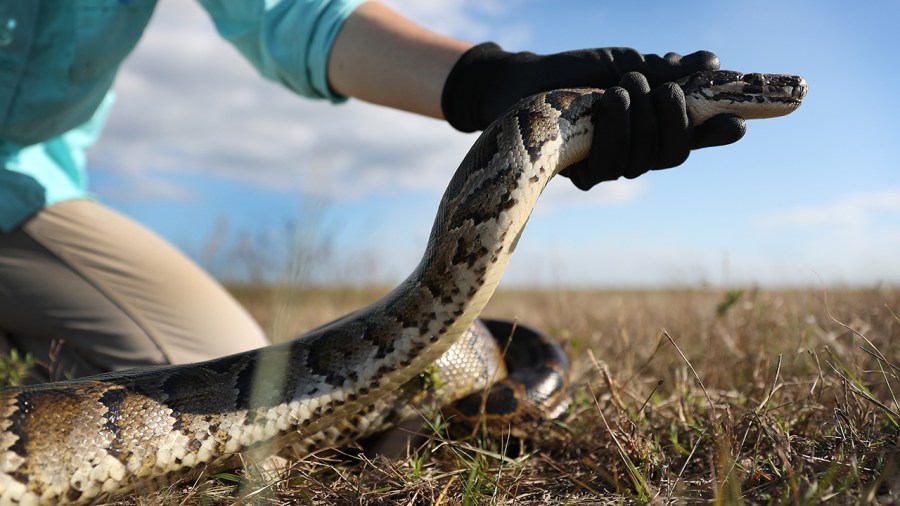
TALLAHASSEE, Fla. (WFLA) – Gov. Ron DeSantis spotlighted the 11-foot-long Burmese python Tuesday, making it clear the fight to protect the Everglades from invasive species continues.
For people in the Sunshine State, removing Python is nothing new. Whether it’s the efforts of the Florida Department of Fish and Wildlife or the annual Python Challenge, the state is now working with other partners to help achieve record numbers of removals in the Everglades.
Clearwater police remove 5-foot-tall boa constrictor from woman’s car: ‘Another day in Florida’
Burmese pythons are not native to Florida, but they do live in the Everglades. Snakes prey on small species such as birds and rabbits, but they also prey on deer and leopards, and their numbers are rapidly increasing.
A major effort to remove invasive species from Florida lands began in 2019. DeSantis and the Florida Fish and Wildlife Conservation Commission expanded removal efforts and included the public in Florida’s annual Python Challenge.
And while efforts to remove pythons have become very common, they haven’t had the impact the state had hoped. Last year, the number of removals tripled until FWC partnered with Inversa, a company that specializes in python removal.
“Last week, we visually detected pythons for the first time from an aerial system, and yesterday we completed a predictive behavioral AI model that improves python capture by 50x, allowing us and our hunters to remove exponentially more pythons,” said Aarav Chavda, co-founder and CEO of Inversa Leathers.
The Florida Legislature approved a $2 million investment in 2025, and the governor wants it to continue.
“Let’s keep this momentum going. We want to work with the Florida Legislature to make sure this funding is maintained,” DeSantis said.
Besides the Florida Python Challenge, there are other ways people can continue to help control invasive species such as Burmese pythons. Anyone can remove and humanely kill pythons and other non-native reptiles at any time on private land and on 32 FWC-managed lands throughout South Florida with landowner permission.
Click here for more information.

